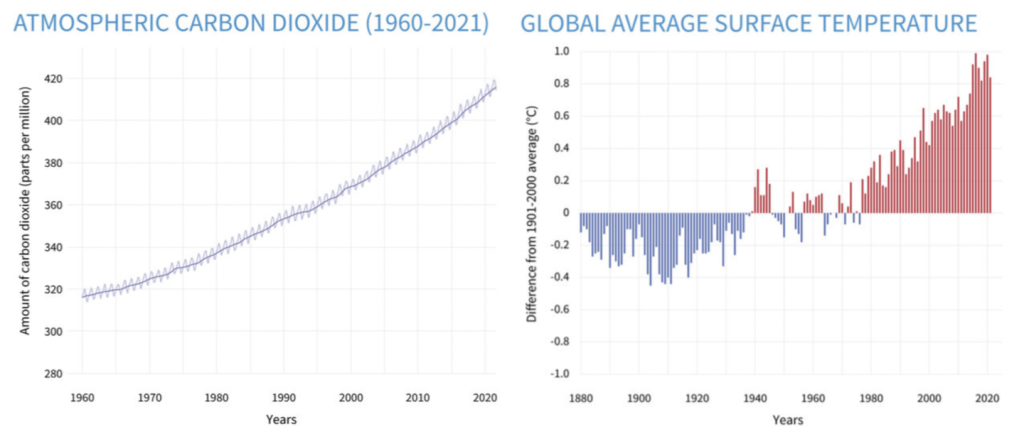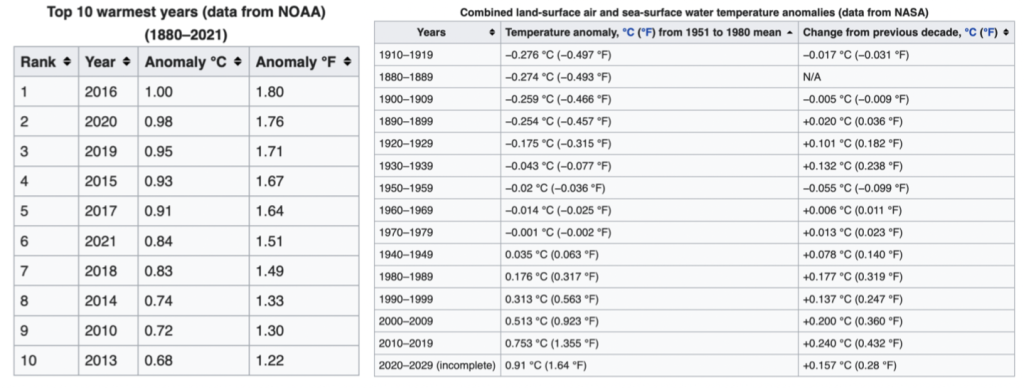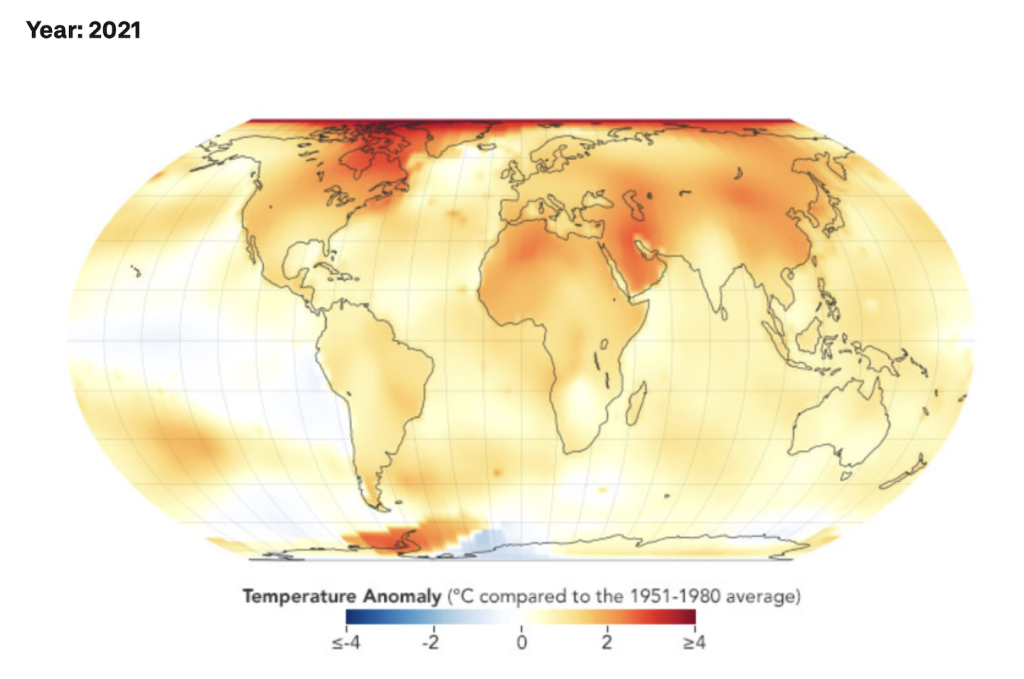Our planet is warming. Carbon dioxide (CO2) levels in our atmosphere have increased from under 300 ppm in the early 1900s to over 410 ppm today. This is mostly due to the burning of fossil fuels. Carbon dioxide acts as a greenhouse gas and the global mean temperature has risen 1.8 °F (1 .0 °C) in the past 20 years. This change in temperature has affected weather patterns all over the globe. On average, what we expect to see in the coming years is an earlier arrival of typical spring temperatures. Likewise, we expect longer and hotter summers, a later arrival of typical winter temperatures, and less predictable patterns of precipitation. The phrase “on average” is very important to understanding climate change. The average rate of climate change for any given location will be very slow, but the effects on local weather patterns will vary in intensity.

Carbon dioxide levels have been rising steadily in our atmosphere for decades. The average temperature at the earth’s surface is also trending upwards, but notice that it drops for short periods, too. Compared to the 20th Century as a whole, we are now between 0.8 and 1.0 °C warmer. (Figures from NOAA.)
In the coming years, your garden is likely to experience spring temperatures sooner than in past years. However, in some years, spring could come later. The chance of the latter is lower than the former, but far from zero. As we’ve seen in the previous decade, peak summer temperatures will usually be higher than usual. In a like manner, typical fall temperatures will remain a bit longer before falling. In both cases, the opposite may occasionally be true. But those instances with be rare.
On average, this progression will be very slow. It will also vary with location. For example, regions near the poles are warming faster. In addition to changes in the seasonal temperatures, you may experience more or less rainfall than average, depending global weather patterns. You will also likely experience years during which your weather is relatively normal.
You can think of climate change this way. Let’s say you had a 6-sided die and you rolled it each spring. The number you got determined your weather. One and two meant cooler than usual weather. Three and four meant average temperatures. And five and six meant higher temperatures. In the past, with a fair die, those three outcomes would have occurred equally frequently in the long term. These days, the die would be loaded. It would be fixed so fives and sixes occurred slightly more often than they should. You could still roll a one through a four, though. You could even roll a series of ones, twos, threes, and fours. However, over time, you’d rack up more five and sixes than any of the other numbers.

The ten hottest years of all time all occurred in the past 20 years. Nine of the past 10 decades have been warmer than the decade before them. 1940–1949 stands out as a comparatively hot decade. (Data from NOAA and NASA; tables courtesy of Wikipedia)
When it comes to planning your garden, the thing to realize is that the average change in your seasonal weather is going to be very slight. However, the variability in weather patterns will be higher than in past years. Most years, your usual planting schedule should work. However, in other years it might be substantially out of sync with the weather. As such, you may want to hedge your bets. Since temperature anomalies are more likely to be higher than lower, your best bet is to assume that you will experience normal temperatures during the gardening season, but prepare for warmer temperatures. In an upcoming post, I will explain how to do this.

In 2021, some parts of our planet experienced temperatures on par with their long-term average. Much of the Pacific Ocean, for example, was not hotter or colder than usual. And, some of Antartica was slightly colder than usual. However, most places on earth were warmer than usual — especially near the poles. (Figure from NOAA.)

[…] will have a number of effects on our lives. As gardeners, one of the most important of these is a change in the arrival time of spring temperatures. Averaged globally, spring temperatures will start arriving very slightly sooner each year. […]